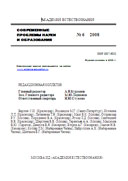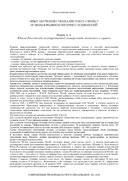PDF-версия статьи


|
Although the original academic home for HCI was computer science, and its original focus was on personal productivity applications, mainly text editing and spreadsheets, the field has constantly diversified and outgrown all boundaries. It quickly expanded to encompass visualization, information systems, collaborative systems, the system development process, and many areas of design. HCI is taught now in many departments/faculties that address information technology, including psychology, design, communication studies, cognitive science, information science, science and technology studies, geographical sciences, management information systems, and industrial, manufacturing, and systems engineering. HCI research and practice draws upon and integrates all of these perspectives.
A result of this growth is that HCI is now less singularly focused with respect to core concepts and methods, problem areas and assumptions about infrastructures, applications, and types of users. Indeed, it no longer makes sense to regard HCI as a specialty of computer science; HCI has grown to be broader, larger and much more diverse than computer science itself. HCI expanded from its initial focus on individual and generic user behavior to include social and organizational computing, accessibility for the elderly, the cognitively and physically impaired, and for all people, and for the widest possible spectrum of human experiences and activities. It expanded from desktop office applications to include games, learning and education, commerce, health and medical applications, emergency planning and response, and systems to support collaboration and community. It expanded from early graphical user interfaces to include myriad interaction techniques and devices, multi-modal interactions, tool support for model-based user interface specification, and a host of emerging ubiquitous, handheld and context-aware interactions.
One of the most significant achievements of HCI is its evolving model of the integration of research and practice. Initially this model was articulated as a reciprocal relation between cognitive science and cognitive engineering. Later, it ambitiously incorporated a diverse science foundation, notably social and organizational psychology, Activity Theory, distributed cognition, and sociology, and a ethnographic approaches human activity, including the activities of design and technology development and appropriation. Currently, the model is incorporating design practices and research across a broad spectrum. In these developments, HCI provides a blueprint for a mutual relation between science and practice that is unprecedented.
Although HCI was always talked about as a design science or as pursuing guidance for designers, this was construed at first as a boundary, with HCI research and design as separate contributing areas of professional expertise.
No one can accuse HCI of resting on laurels. Conceptions of how underlying science informs and is informed by the worlds of practice and activity have evolved continually in HCI since its inception. Throughout the development of HCI, paradigm-changing scientific and epistemological revisions were deliberately embraced by a field that was, by any measure, succeeding intellectually and practically. The result has been an increasingly fragmented and complex field that has continued to succeed even more.
References
1. Carroll, John M. (ed.) (2003). HCI Models, Theories, and Frameworks: Toward a Multidisciplinary Science. Morgan Kaufmann
2. Rosson, M.B. and Carroll, J.M. (2002). Usability Engineering: Scenario-Based Development of Human Computer Interaction. Morgan Kaufmann.
ОПУБЛИКОВАНО
M.M.Medetbekov., M.M.Medetbekova., K.T.Ayhinbay., N.R.Kuanbay., B.R.Kolboev Perspectives of development of interfaces . // Современные проблемы науки и образования - 2017.-№6. (приложение "Педагогические науки"). - C. 11